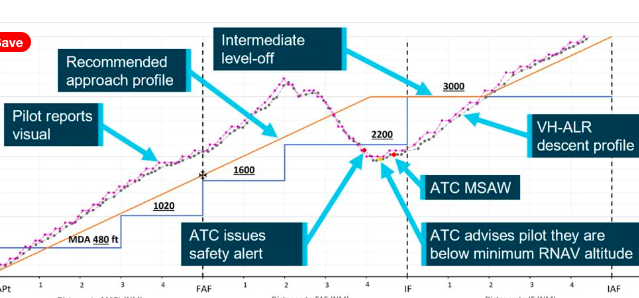Lessons Learned: Descent Below Safe Minimum Altitude

Increased pilot workload during Parafield descent below safe minimum altitude incident.
A Beech Baron’s descent below safe minimum altitude on approach to Adelaide’s Parafield Airport highlights to pilots the importance of vigilance of the aircraft’s altitude and workload management, an ATSB (Australian Transport Safety Bureau) investigation report details.
On August 12, 2022, the twin-engined Baron was being repositioned from Port Augusta to Parafield, with weather conditions necessitating an instrument approach (using the RNAV GNSS RWY 21R instrument approach procedure).
“While in cloud on the approach segment between the initial approach fix and intermediate fix, the aircraft descended below the 3000 ft segment minimum safe altitude,” ATSB Director Transport Safety Dr. Stuart Godley explained.
“The aircraft continued to descend and entered the next segment at 2000 ft, below that segment’s minimum safe altitude of 2200 ft.”
The approach controller then received an automated warning and contacted Parafield tower, who alerted the pilot. The pilot subsequently climbed the aircraft back above the minimum altitude.
“The pilot was experiencing an increased workload from conducting an instrument approach in cloud and turbulence and did not detect their flight below the segment minimum safe altitude.
“This incident is a good reminder to pilots of the importance of close monitoring of the aircraft’s vertical and lateral navigation, in particular, during high workload phases of flight.”
The investigation report notes that once the pilot returned above minimum safe altitude, he continued the climb. The aircraft was about 7 NM from the runway and 850 ft above the recommended profile, when the pilot elected to continue the approach.
“Continuing the approach from that position, above the recommended profile, required a higher-than-normal descent rate, and had the potential to increase the pilot’s workload,” Dr. Godley added.
The pilot established visual reference with the runway about 4 NM from the threshold and landed without further incident.
The ATSB report notes the pilot was referring to a handheld paper copy of the instrument approach procedure but that the aircraft’s control yoke did not have a chart holder, nor did the pilot have a document holder or kneeboard available.
This increased the difficulty monitoring the check altitudes and segment minimum safe altitudes.
“Continuous monitoring of the aircraft’s altitude relevant to the various segment minimum safe altitudes, and having the instrument approach procedure available in a suitable location, are both key to minimising workload and conducting an instrument approach safely,” Dr. Godley said.
“Pilots also need to remain vigilant about the relationship between the procedure commencement altitude and the constant descent final approach path, including that the correct waypoint has been identified for managing the descent profile and ensuring the distance-based check altitudes are correctly interpreted.”
Read the report: Flight below minimum altitude involving Beech Aircraft Corp 95-B55, VH-ALR, 20km north-north-east of Parafield Airport, South Australia, on 12 August 2022. Publication date: 15/05/2024.



